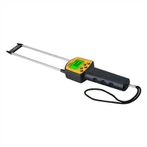Is the switching power supply bulky?
When the switch is connected, current will flow from the input voltage, VIN, to the primary of the transformer, and to the switch. This time forward diode D5 will be forward biased. Freewheeling diodes, on the other hand, are reverse biased. Inductor L1 and output capacitor C2 will charge and current will flow from the secondary winding to the output. During the switch off period, no current is drawn from the input, but the current on the primary winding will continue to be drawn across the RCD clamp until the energy above is dissipated. When the core leaks energy, the diode (D2) on the RCD will be reverse biased. The forward diode will be reverse biased since current is not being drawn from the input source VIN.
On the other hand, the freewheeling diode will be forward biased. Both inductor L1 and capacitor C2 use charge energy to provide the power requirements of the load. Many topologies are available for DCDC switching converters such as half-bridge, full-bridge, resonant (eg LLC) or push-pull. Because of switching operation, these topologies are switch-mode power supplies consisting of several switching converters, combined with the converters discussed above. In fact, it is a power supply that uses modern power electronics technology to control the switching time ratio and always maintains a stable output voltage. Switching power supplies usually consist of pulse width modulation (PWM), and the control consists of ICs and MOSFETs. With the development of power electronics, switching power supply is also constantly developing. At present, switching power supplies have been widely used in electronic equipment because of their small size, light weight, and high efficiency. This is a power supply method for the development of the electronic information industry.






